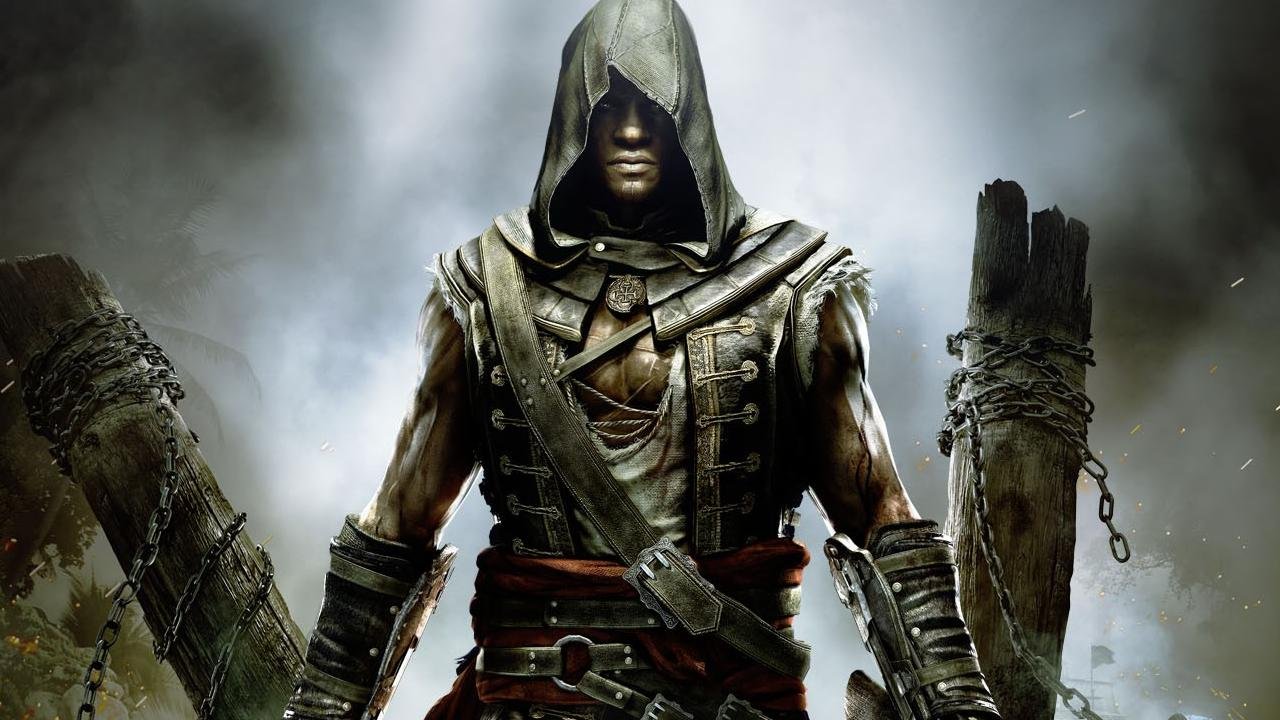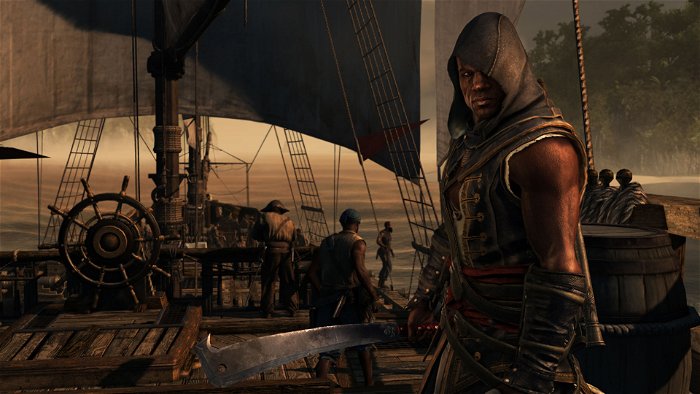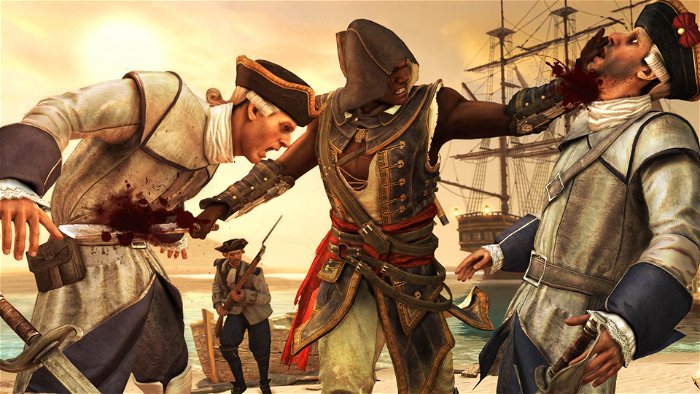This article discusses several plot points from Assassin’s Creed IV: Freedom Cry.
Assassin’s Creed IV: Freedom Cry is an unassuming game. Released first as downloadable content for ACIV: Black Flag, Ubisoft Quebec’s expansion was relegated to side-story status from the start. Despite this, what Freedom Cry actually offers is a glimpse of Assassin’s Creed at its best, its look at the 18
century slave trade standing out as a far more interesting use of a historical setting than many of the series’ main games.
Freedom Cry’s protagonist, Adéwalé, is a former slave who fled the plantation where he was imprisoned by stowing away on a buccaneer’s ship. He’s first introduced in Assassin’s Creed IV, captive again and en route from Havana to Spain when that game’s player character—Edward Kenway—attacks the transport ship. Adé is one of Black Flag’s most interesting personalities: he becomes Kenway’s friend and colleague, but parts ways with him later in the game to become an Assassin and strike out on his own. Freedom Cry picks up years after Black Flag’s conclusion, with Adé alone, shipwrecked near Port-au-Prince (the capital of what is now Haiti). Adé soon begins aiding the Maroons (former slaves who would lead the revolution that created Haiti) to fight back against their French oppressors.

As the story progresses, the player witnesses acts of unthinkable cruelty common to the game’s time period and setting. A mission where Adé attempts to free a slave ship, only to find it blown apart by enemies, highlights these atrocities. The player, as Adé, dives through the burning wreck, passing corpses and attempting to break the chains of as many survivors as possible. No matter how quickly he acts the end result is the same: the majority of the imprisoned slaves die. Elsewhere, in a recasting of the typical Assassin’s Creed side missions, Adé can rescue injured slaves, kill brutal overseers, and interfere with human auctions. All of these objectives serve to give the player a close look at the stomach-churning nature of life in a slave-based society. The horror that colours nearly every moment of the game is meant to remind audiences of the inhumanity that characterized the European colonization of the Americas.
No matter how well the player performs, though, the game ends in the same way, Adé having assisted the early stages of the Maroon uprising while recognizing that he’s powerless to actually defeat the larger, cultural evil that makes it necessary. The futility of trying to defeat an institution as immense and well-organized as slavery by killing overseers and plantation owners is illustrated in appropriately horrific fashion when the plot ends quite close to the same way it started. Despite the hours the player has invested in helping Haiti’s slaves, Freedom Cry subverts the sense of accomplishment that comes from “liberating” enemy-held areas by concluding without any significant progress having been made. It (very cleverly) uses the gameplay mechanics that make Assassin’s Creed games fun to play to illustrate its story’s larger message: economically driven, culturally acceptable evils like slavery can’t be defeated just by killing those engaged in it in a single location.
Compare the intertwining of series mechanics and narrative purpose here to the squandered potential of the most recent Assassin’s Creed release: Unity. Though set during the early years of the French Revolution—an extraordinarily rich period of history—Unity makes only occasional attempts to engage with its setting, preferring instead to focus on its Assassins vs. Templars fiction. The politics that mobilized the Parisian mobs, ousted a monarchy, and eventually lead to the Terror are pushed aside in favour of ancient conspiracies that have little or nothing to do with the actual human condition. If Unity took a similar approach to Freedom Cry, it could have been an intellectually challenging game that bridged themes of the French Revolution with the modern world. Players could have been asked to think about topics pertinent to current events in a new way—concepts like the validity of violent revolution as a means of political change; the manner by which power perverts well-meaning ideologies, and much, much more. This is what Freedom Cry accomplishes, and this is why it’s testament to how culturally important the Assassin’s Creed series can be when its developers take full advantage of the games’ historical settings. It’s because of Freedom Cry’s success—because it demonstrates how well Assassin’s Creed can handle complicated, difficult concepts through its gameplay systems and storytelling style—that players can hope for something better with the series next instalment, even if Unity was a bit of a misfire.






